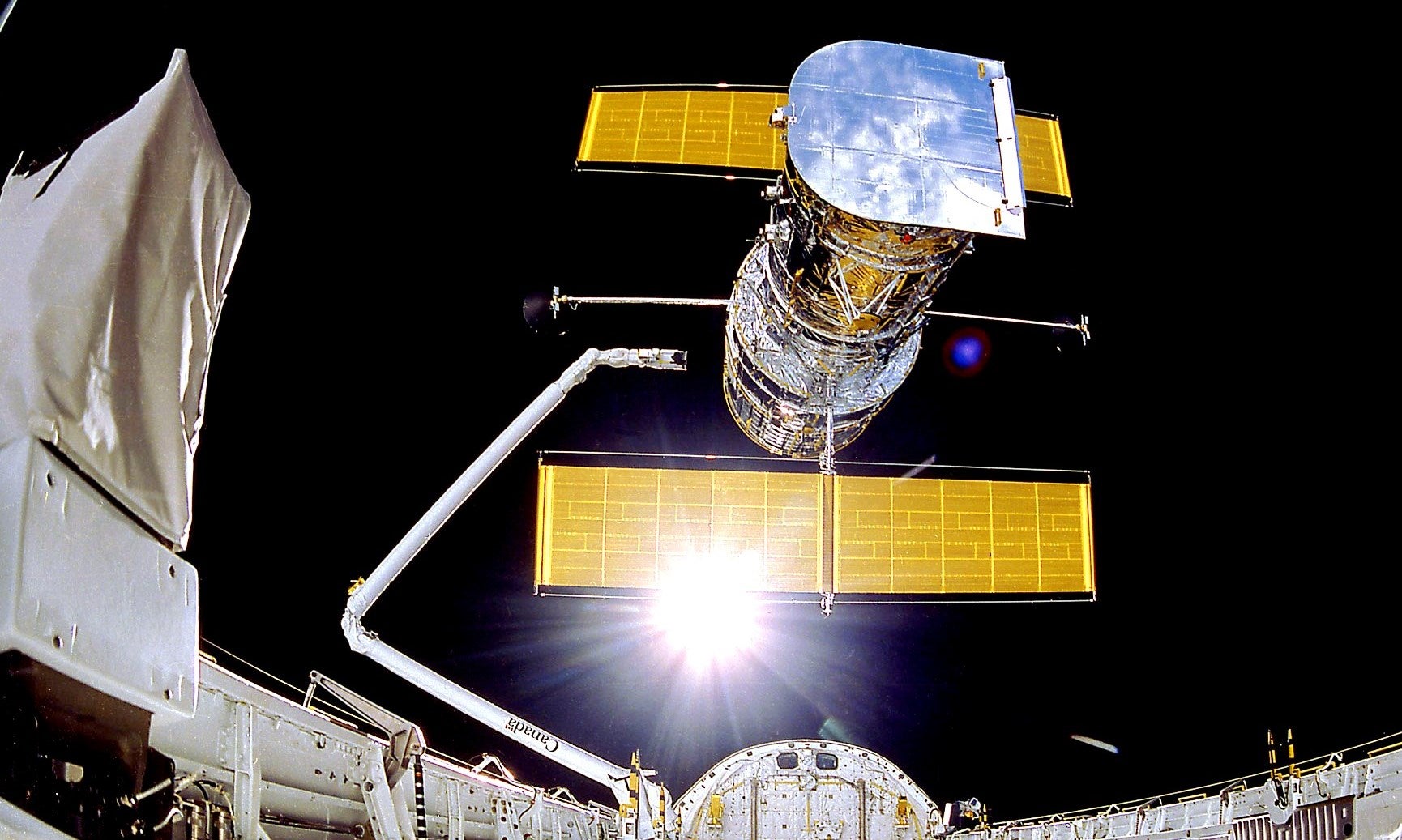A critically important computer aboard Hubble has glitched out, causing the space telescope to enter into safe mode. An operations team is now scrambling to resolve the issue.
Here we go again.
The 31-year-old Hubble pulled the same stunt this past March, when a software problem caused the telescope to enter into safe mode. Similar safe mode events previously happened in 2008, 2018, and 2019, the latter being a partial safe mode episode. In each case, Hubble came back to life, in a pattern we hope will be repeated yet again.
The latest problem started on Sunday, June 13, when the onboard payload computer — a vital instrument responsible for controlling and coordinating the telescope’s science instruments — suddenly ground to a halt, according to a NASA statement put out on Wednesday.
Hubble’s main computer, after failing to receive the usual handshake message from the payload computer, reacted by automatically putting all science instruments into safe mode. On Monday, a team at NASA’s Goddard Space Flight Centre in Greenbelt, Maryland, managed to restart the payload computer, but the problem reappeared.

A degrading memory module is believed to be responsible for the anomaly. The team is having to deal with some legacy components; in this case, the NASA Standard Spacecraft Computer-1 (NSSC-1), the design of which dates back to the 1980s. Indeed, Hubble, deployed on April 25, 1990, is old, plain and simple.
The operations team switched to a backup memory module, one of several that are available, on Wednesday in an effort to move forward. They’ll now allow the payload computer to run for an entire day to make sure it’s running properly. Once that’s done, all science instruments aboard the spacecraft will be re-started, allowing the telescope — fingers crossed — to resume normal science operations, like imaging galaxies, planets, and other celestial phenomena.
The Hubble Space Telescope, a collaboration between NASA and the European Space Agency, was only supposed to last for 15 years, but here we are over three decades later. Since entering low Earth orbit, the machine has taken more than 1.5 million observations, and its data has appeared in more than 18,000 peer-reviewed publications, according to NASA.
Hubble has done its bit for king and country, yet there’s no reason to believe it won’t keep trucking along for a few more years, or even another decade or more. And should it finally fail, there’s already a replacement at hand, namely the James Webb Space Telescope, which is scheduled to launch this coming fall.
More: Hubble’s latest batch of space porn is some of the best we’ve ever seen.
